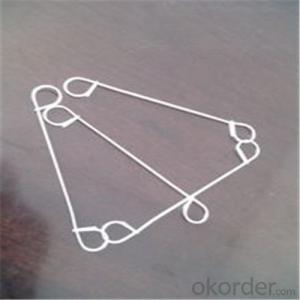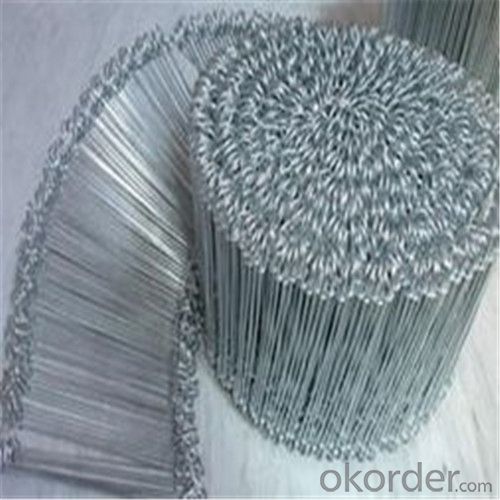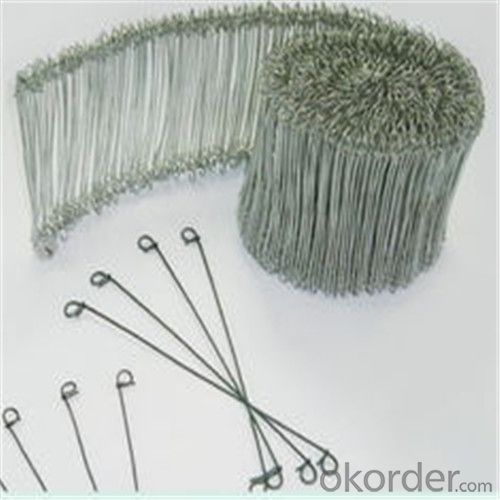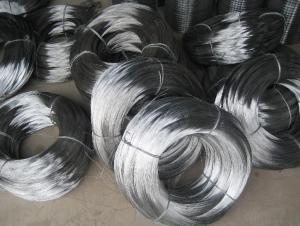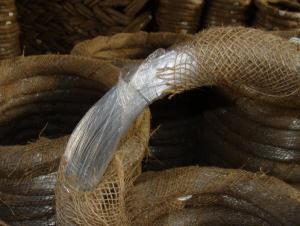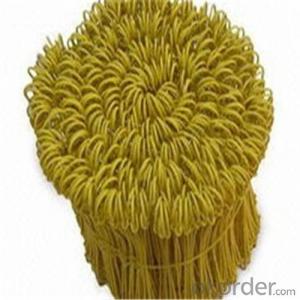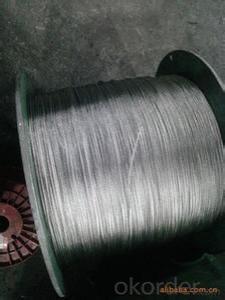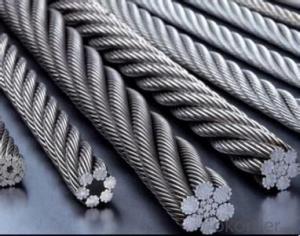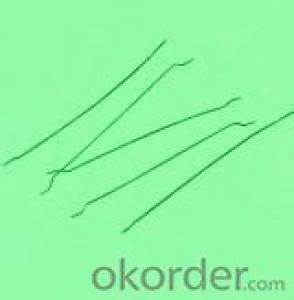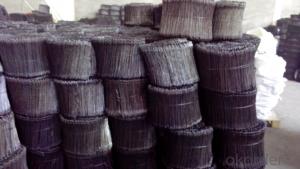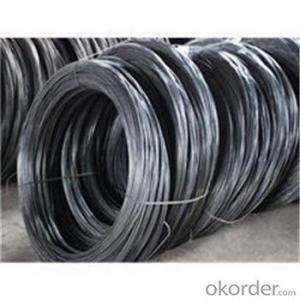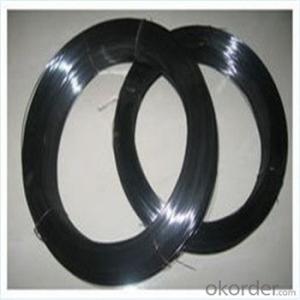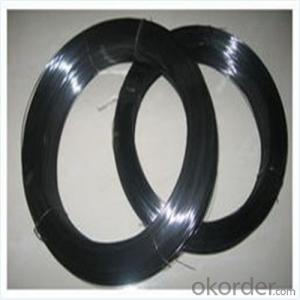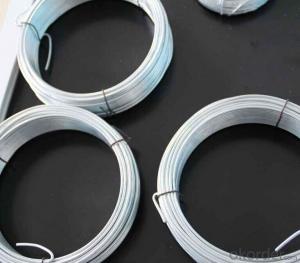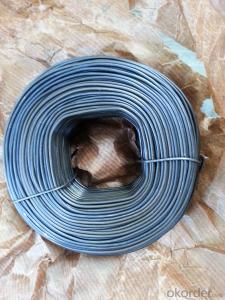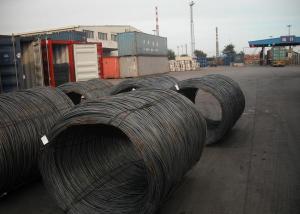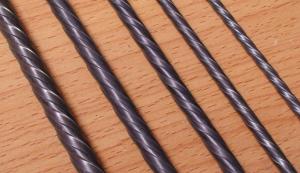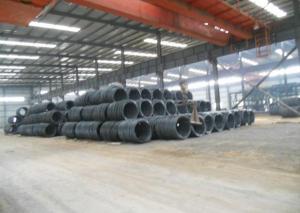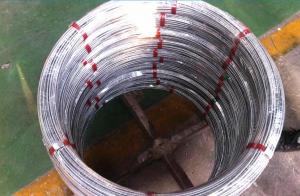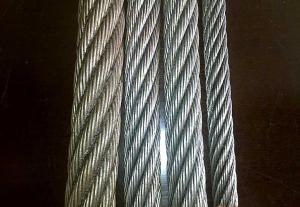Looped Tie Wire/Bag Tie Black Annealed/Elecro or hot dipped galvanized
- Loading Port:
- Tianjin
- Payment Terms:
- TT OR LC
- Min Order Qty:
- 10000 kg
- Supply Capability:
- 3000000 kg/month
OKorder Service Pledge
OKorder Financial Service
You Might Also Like
1.Structure of Looped Tie Wire Description:
Loop Tie Wire is also known as tie wire or binding wire. It is easy to operate, therefore it's widely uses in binding of different materials, especially for daily use. The main materials of loop tie wires are galvanized iron wire, black annealed iron wire, PVC-coated iron wire and copper wire.
Loop tie wire is coated with PVC to create a strong, easy-to-use twist wire tie. PVC coating will not crack, chip or scratch off when tying; meantime this coating provides protection against rust and corrosion. It is widely used for tying and support of plants in gardens or other binding uses, such as tying of sacks and other bagging. This kind of wire is also widely used in securing the position of reinforcing bars during concrete placement.
2.Main Features of Looped Tie Wire:
• Durable
• Practical
• Convenient
• Use widely
• Inexpensive
• Soild
3. Looped Tie Wire Images
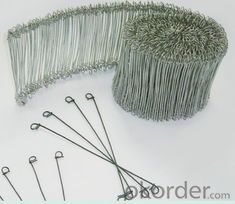
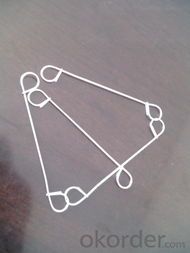
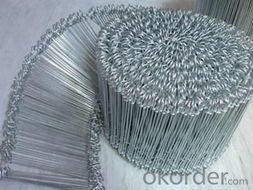
4.Looped Tie Wire Specification
Wire Gauge | SWG in mm | BWG in mm | In Metric System mm |
8# | 4.06 | 4.19 | 4.00 |
9# | 3.66 | 3.76 | |
10# | 3.25 | 3.40 | 3.50 |
11# | 2.95 | 3.05 | 3.00 |
12# | 2.64 | 2.77 | 2.80 |
13# | 2.34 | 2.41 | 2.50 |
14# | 2.03 | 2.11 | |
15# | 1.83 | 1.83 | 1.80 |
16# | 1.63 | 1.65 | 1.65 |
17# | 1.42 | 1.47 | 1.40 |
18# | 1.22 | 1.25 | 1.20 |
19# | 1.02 | 1.07 | 1.00 |
20# | 0.91 | 0.89 | 0.90 |
21# | 0.81 | 0.813 | 0.80 |
22# | 0.71 | 0.711 | 0.70 |
23# to 34# also available for galvanized iron wire. | |||
5.FAQ
We have organized several common questions for our clients,may help you sincerely:
①How about your company?
We are professional manufacture with many years of experiences, have advanced facilities for production, and most of the products, like Looped Tie Wire are welded by automatic machine. We have ISO9001 certificates which can assure the quality of our products. With many years of export experiences, our friendly and professional sales team can offer favorable services, that can give best solution for your projects. We can arrange car pickup or hotel booking whenever you want to visit our factory.
②what is the Typical Applications of our Looped Tie Wire?
Splicing drip hose couplers to irrigate crops
Securing bags of potatoes, onions, etc.
Staking seedlings and ornamental at nurseries
Bundling bar stock, tubing and pipe for shipment
Securing concrete reinforcement bars in construction
③How long can we receive the product after purchase?
In the purchase of Looped Tie Wire within three working days, We will arrange the factory delivery as soon as possible. The pacific time of receiving is related to the state and position of customers. Commonly 15 to 20 working days can be served.
- Q: no power to brown trailer wire
- If wired correctly this is the brake light wire. Have someone hold the brake pedal down then probe with a voltage checker to see if the wire is broken or not. This is a small tester with a red light on it and you poke the point into the wire with the black wire grounded. Make sure all the fuses are okay and the sockets rust free, etc. Make sure the adapter (female) on the vehicle is corrosion free. I have to scrape mine out every year or so as it corrodes with oxidation.
- Q: i know what spark plugs are but what are plug wires and the purpose of getting them. what do the plug wires do? someone told me that it was time to get spark plugs and plug wires replaced on my 2000 impala.
- Spark plugs are part of the ignition system where a spark is created igniting the fuel in the cylinder of your car. Plug wires are electric wires that connect the coils high voltage electricity to the spark plugs. Spark plugs are usually replaced based on mileage on your car or if performance seems to be dropping. You might notice sluggishness on acceleration for example or a engine miss. Plug wires should be replaced if you noitice cracking in the insulation or if you have a problem not resolved by the plugs. Plug wires can be tested before replacing and i recomment just a good shop manual to do this. Plug wires do not replacing everytime you change spark plugs but only if damaged, cracking etc.
- Q: Okay so I just finished replacing a stolen car radio, but I think I messed up the wiring... When I turn off the car the radio doesn't seem to save the presets I had... it resets the whole stereo... I think it has something to do with the wiring I did... When I installed the radio there were two 12+ volt wires... One said 12+ volt constant and was yellow, and the other said 12+ volt switch and was pink... Problem was when I wired only the yellow one the car stereo wouldn't work, so I tried the pink one and that didn't work.. SO thinking I was clever I wired both to the 12+ volt and VOILA the radio turned on... Problem is I don't think that's how I was supposed to wire it... I have a '97 Honda accord Ex and I don't know if that's what I was supposed to do... :#92;
- the yellow wire is supposed to go to constant power. the pink wire is supposed to go to a switchable power source. usually an ACC wire.
- Q: I notice my 10/100 Ethernet wire uses 4 wires (2 twisted pairs). I'm curious what each wire is used for. I understand one pair is for Tx (transmit) and the other for Rx (receive) but why does it need 2 wires for each? I assume bits of data cross on one, but what of the other?
- This is an ethernet only cable. A full patch lead has 8 cables. Yours is STILL an ethernet cable. The additional blue pair would be telephone and the brown pair was unused, but is commonly used for power over ethernet now. ANY data connection requires 2 cables to balance the signal. In effect one is pushing voltage while the other is pulling and vice versa. One is signal, in effect the other is a ground, bur the idea is that by using twisted pair cables the inductive voltage created in one polarity on one is cancelled by the inductive voltage returning on the other in opposite polarity. The same rule applies to external interference from other equipment as these are also cancelled. If it used one cable and a common ground you can never guarantee this immunity to interference.
- Q: What's the thickness, or measurement for the last or thickest wire?
- they change your wire according to how much your teeth have shifted around, so it just depends. the ortho needs to adjust the size of the wire due to your teeth straightening out and making sure the wire(s) are at a correct length. its really not that thick of a wire, so don't worry about it. :D
- Q: what do i do? the wire just snapped.
- If the wire is broken but still attached to your brackets and it isn't moving you could put a piece of wax or gum over where the sharp part is to prevent you from catching your cheeks or lips on it. If it's too loose and about to fall out then try gently sliding the wire out from under the bands around the brackets (only if you really have to). Make an appointment to your orthodontist as soon as they can get you in because that isn't fun to have to put up with. Please don't chew on anything hard like candy or it might make the weakened bracket pop off which might make for a longer appointment. Stick with soft foods 'till you can get it fixed. I had them for 4 years! Now I work in a dental office. Just take it easy, don't worry too much. :)
- Q: I am replacing a 2 wire circuit for a fan/light combo with a 3 wire fan/light combo switch. I ran a new 12/2 w/grnd to the switch box. I ran a 12/3 w/grnd to the ceiling box for the fan. I have a ceiling fan and light control switch that control light and fan separately. I can't figure out which wires go to what.
- To make that easy to understand we take fan as light and to turn on the fan you need one neutral wire one hot wire and one ground wire.Switch is a cut circuit device which will install in hot wire(simple circuit).If already it's wired you will have 4 connected wires in the light box which one of the hot wires and neutrals are directly to the light and separate from other wires,(BLACK AND WHITE) so connect them to the fan wires as same color and if you see green wire in fan connect it to the ground(COPPER). Now 3-way wiring is using 2 control for fan. 3-way switch has 3 entry 2on top and 1 in bottom (COMMON) SHOT DOWN POWER FIRST then: 1- connect main hot to first switch (TOP LEFT) 2-connect free hot wire 3/12(RED)to the (COMMON) 3- connect BLACK hot to (TOP RIGHT) 4-connect neutral to neutral and ground to ground 5-send 12/3 after connecting as above to the fan box. 6-IN other switch with another 3/12 wire connect BLACK to (TOP LEFT) 7-connect RED to (TOP RIGHT) 8-Connect WHITE to (COMMON)and by wire tape put a black sign to white wire as return HOT. 9-Send that wire to fan box . A-NOW in fan box connect RED TO RED and BLACK TO BLACK . B-connect NEUTRAL from first switch to the fan neutral wire C-connect all the ground to gather. D-connect WHITE wire from second switch to the BLACK wire of the fan and put the black tape on it to separate that from neutral wire. Before close the switches turn on power and try both switch to make sure one will turn off and another will turn on and opposite.
- Q: home, thermostat, wiring
- green wire is 24 volts from the t-stat to the indoor fan relay, i promise! unless it's a trane. trane has their own wiring codes and i don't remember trane wiring at this time. i can look it up but don't want to. green goes to the indoor fan relay, for real. the fan relay energizes 110 volts and turns the indoor fan on. be careful jacking around with that stuff. remember, you have low voltage from the transformer and t-stat and high voltage everywhere else. the outside stuff is 220 volts. ZZZZZZZZZZZZ!
- Q: what wires do i use to bridge subs together?
- Use 12 gauge speaker wire, anything else will cut down the signal. The bigger the wire the cleaner and stronger signal that will transfer from one to the other. Besides, subs are not like compnent speaker or 6X9 speakers, they need a good signal to produce a quality sound. Use the 12 gauge wire to wire up your voice coils, and run 12 gauge wire from your amp to these subs as well.
- Q: I have seen 2 wire detectors and horn strobes, and 4 wire detectors and horn strobes. What is the difference? The 2 wires are cheaper.
- In 2-wire systems the power and the detector signal are multiplexed onto 2 wires. The detector has to have circuitry to extract the power and multiplex the signal onto the wires, making them slightly more complex. In 4-wire systems the power is separate from the signal, unless there is more than one signal from the detector (i.e. smoke heat). It could be 2 wires for power and 2 wires for a single signal (i.e. smoke), or 1 wire for power, 1 wire for smoke, and 1 wire for heat, with the 4th wire being common to all 3. .
Send your message to us
Looped Tie Wire/Bag Tie Black Annealed/Elecro or hot dipped galvanized
- Loading Port:
- Tianjin
- Payment Terms:
- TT OR LC
- Min Order Qty:
- 10000 kg
- Supply Capability:
- 3000000 kg/month
OKorder Service Pledge
OKorder Financial Service
Similar products
Hot products
Hot Searches
